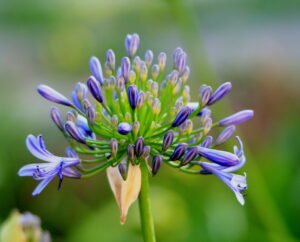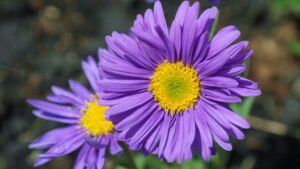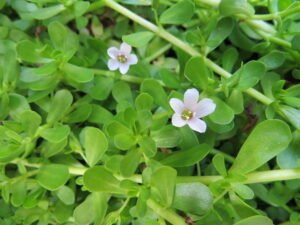How to Grow and Care for Aloe Vera Plants

Aloe vera is one of the most popular plant species in the genus Aloe. It is a widely grown succulent plant, grown both indoors and outdoors. Aloe vera is popular as an ornamental and medicinal plant. This article will help you understand how to grow and care for aloe vera plants.

Aloe vera is an evergreen perennial plant. The Arabic word “Alloeh,” which means “shining bitter substance,” is the source of the name Aloe, while vera in Latin means “true.”
Some Interesting Facts About Aloe Vera
Since aloe vera is a succulent plant, its leaves retain water. It is interesting to know that aloe gel is 98.5% water, while the rest is vitamins, minerals, enzymes, etc.
Aloe vera is well renowned for its antiviral, antibacterial, and antiseptic qualities. It may therefore aid in the healing of wounds and the treatment of skin issues.
Genus Aloe, which consists of more than 500 species, is native to Africa and Arabia. The popular Aloe vera species is native to Oman.
Some Frequently Asked Questions About Aloe Vera Plants
Is Aloe vera a sun or shade plant?
Since aloe vera is a tropical plant, It enjoys dry, warm temperatures. Aloe vera needs bright, indirect sunshine to flourish well. But keep in mind that in the summer, direct afternoon sunshine will turn its leaves brown.
If you’re going to grow aloe vera inside, make sure it gets six to eight hours of indirect sunlight per day. It can withstand some shade, but make sure it’s not stored in a pitch-black space.
Is Aloe vera an annual or perennial plant?
Aloe vera is a perennial plant that takes four to five years to reach maturity. Its lifespan is twelve years, but with the right care, it can live up to twenty years.
Can aloe vera grow outside?
Aloe vera can be planted directly in the ground or cultivated outside in pots and containers. However, it is important to remember that during the hot summer months, plants should be protected from the afternoon sun, and in the winter, they should be brought inside if there is a chance of frost or snowfall.
How To Grow And Care For Aloe Vera Plant
Right Location For Aloe Vera
Whether you are growing aloe vera in the ground or in pots and containers, choosing the proper location is crucial for successful growth.
Select an area that receives sufficient bright indirect sunlight. Additionally, make sure it is not situated in a drafty or chilly area.
If you are growing aloe vera directly in the ground, ensure that the area is well drained and there is no water logging.
Right Pot For Aloe Vera
The pot you choose is crucial if you intend to cultivate aloe vera in pots or other containers. It is always a good idea to use a porous container, such as one made of ceramic or terracotta, because it allows for optimum air circulation around the roots.
While selecting a pot, ensure there is a drainage hole in it.
The ideal pot sizes for aloe vera to grow in are six to twelve inches. Because aloe vera roots prefer to be packed closely together, always start with a tiny pot.
A larger pot retains more moisture, which can cause root rot in aloe vera plants.
Right Soil For Aloe Vera
Aloe vera prefers porous, well-draining soil. This plant is succulent, meaning that its leaves hold onto moisture. Moreover, root rot can result from too much moisture in the soil surrounding the roots.
Loamy and sandy soil with a pH range of slightly acidic to neutral is ideal for aloe vera growth.
For aloe vera plants, a regular succulent and cactus soil mixture will work. Alternatively, you can mix potting soil at home. Add two parts sand, one part garden soil, and one part compost, vermicompost, or organic manure to potting soil mix for aloe vera plants.
Right Watering For Aloe Vera
How often to water Aloe vera plant?
Watering aloe vera plants correctly is the most important aspect of their care. The fastest way to kill an aloe vera plant is overwatering and waterlogging.
Deep-watering aloe vera plants is the ideal method; after that, let the soil dry completely before giving it another shot.
When watering an aloe vera plant in a pot, make sure to water until it freely flows out of the drainage hole, and then allow the top three to four inches of the soil to dry completely before the next watering.
Aloe vera root rot can be caused by constantly wet and soggy soil, so be sure to avoid it. Additionally, keep in mind that over-head watering of aloe vera plants can result in fungal infestations on the leaves.
Right Pest and Disease Care For Aloe Vera
Aloe vera is resistant to most pests and diseases. However, it is susceptible to fungal infections, snout beetles, gall mites, and spider mites.
As previously said, you should never overwater or water overhead to prevent fungal infections.
Check the plant at regular intervals for indications of pest infestation.
If there is a pest infestation on aloe vera plants, apply the neem oil mixture to the plants on alternate days until the pest infestation is eradicated.
Right Fertilizer For Aloe Vera
Aloe vera grows slowly and doesn’t require a lot of fertilizer. One springtime application of balanced, slow-release fertilizer is adequate for the entire year.
Apply NPK 1-1-1 to aloe vera plants once in the spring for optimal growth.
Aloe vera plants should not be overfertilized as this can result in root burn.
Repotting Aloe Vera
how to repot aloe vera?
Aloe vera plants need to be repotted every three to five years.
Remove the mother plant from its pot. Separate the pups from the mother plant and place the mother plant in a new and larger pot with fresh potting soil mix. Place the pups in smaller pots.





